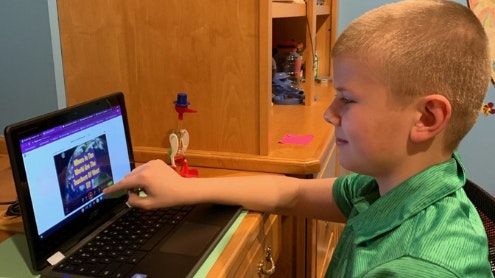Homepage
•
Learning Library
•
Blog
•
How Remote Learning Brought Out Creative Thinking in Schools
Expand breadcrumbs
Expand breadcrumbs
- Learning Library
- Blog
- How Remote Learning Brought Out Creative Thinking in Schools
- Homepage
- •
- Learning Library
- •
- Blog
- •
- How Remote Learning Brought Out Creative Thinking in Schools
How Remote Learning Brought Out Creative Thinking in Schools
By Jennifer Snelling
April 1, 2021








